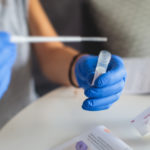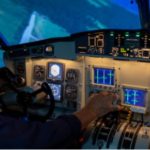The European Union Aviation Safety Agency has published its airworthiness directive which outlines the changes required to Boeing 737 MAX before it can return to service.
The publication of measures by the regulator will trigger a 28-day public consultation and could put the MAX on course for a return to the skies in early 2021 with EASA expecting to issue a formal decision which lifts the grounding in mid-January.
The entire Boeing 737 MAX fleet has been grounded since March 2019 after two crashes within five months of each other which killed 346 people. Investigations found the primary cause in both accidents was caused by the plane’s MCAS software system.
“No stone unturned in our assessment of the aircraft”
EASA Executive Director Patrick Ky said: “EASA made clear from the outset that we would conduct our own objective and independent assessment of the 737 MAX, working closely with the FAA and Boeing to make sure that there can be no repeat of these tragic accidents which touched the lives of so many people.”
The EU directive follows on the Federal Aviation Administration’s granting of final clearance last week. Ky added: “I am confident that we have left no stone unturned in our assessment of the aircraft with its changed design approach. The result was a thorough and comprehensive review of how this plane flies and what it is like for a pilot to fly the MAX, giving us the assurance that it is now safe to fly.”
EASA’s airworthiness directive requires the same changes mandated by the FAA. It differs in two areas with pilots being able to disable a “stick shaker” warning if it has erroneously been activated, to prevent flight crews from being distracted. EASA’s mandate also stipulates that the plane’s autopilot system should not be used for certain landings.
Pilot training, software training and maintenance among requirements
Before individual airlines can assign the Boeing 737 MAX to their flight schedules, they will need to complete all the software upgrades and maintenance actions described in the final Airworthiness Directive. They will also need to train their 737 MAX pilots.
EASA’s statement on the issuing of the directive notes that with a limited number of simulators, the mandatory training “may take some time to schedule.” But it adds some of the work can be started immediately, in advance of the final Airworthiness Directive publication.
Some EASA member states have also issued their own decision prohibiting the operation of the 737 MAX from their sovereign airspace and these bans will need to be lifted before the aircraft can fly again in the airspace of those countries. EASA said it was working closely with the relevant national authorities to achieve this.
In North America, Transport Canada has indicated that it is poised to lift the grounding soon which would enable US airlines to operate over Canadian airspace.
EASA has also agreed with Boeing that the manufacturer will work to even further increase the resilience of the aircraft systems to AoA sensor failures to further enhance the safety of the aircraft. Boeing will also conduct a complementary Human Factor assessment of its crew alerting systems within the next 12 months, with the aim of potentially upgrading these to a more modern design approach.

